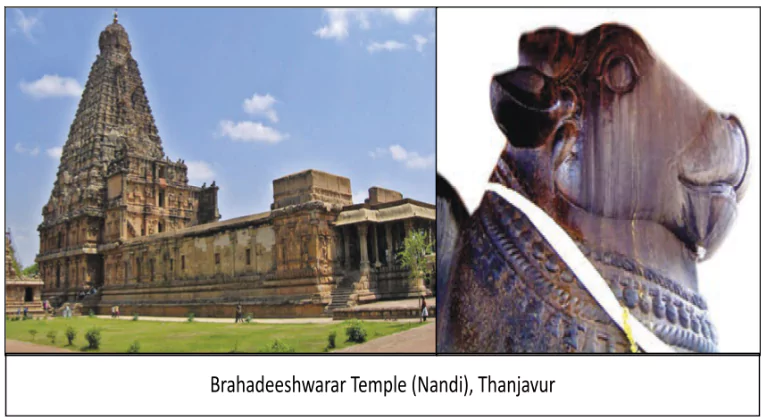Introduction
Chola architecture, epitomized by magnificent temples like Brihadeeswara Temple, showcases the zenith of artistic and engineering excellence in South India, reflecting the grandeur of the Chola dynasty’s reign.
About Chola Architecture
- Early Chola Temples
- These were not large and many small figures called ‘ganas’ are depicted on the temple walls.
- Temples in TamilNadu: Vijayalaya Cholisvara temple in Narthamalai, Brahmapurisvara temple, Mooverkovil etc.
- Later Chola Temples
- These were large temples built with royal patronage.
- Rajaraja Chola, in the year 1010 AD, completed the construction of Brihadeeswara temple, which is known for its grandeur and might.
Enroll now for UPSC Online Course

Brihadeeswara Temple
- The temple is a part of the UNESCO World Heritage Site, known as the “Great Living Chola Temples”, along with the Chola-era Gangaikonda Cholapuram temple and Airavatesvara temple.
- Time Period: The Rajarajeswara or Brihadeeswara temple, completed around 1009 CE by Rajaraja Chola, stands as the largest and tallest Indian temple.
- Shape: Characterized by a massive pyramidal vimana rising 70 meters, it features a monolithic octagonal dome-shaped stupika.
- Structural Features: Two large gopuras with intricate sculptural programs were conceived along with the temple.
- Chola temples, including Rajarajeswara, surpassed their predecessors in scale.
- The temple’s sanctum houses a two-storeyed lingam of Shiva.
- Elaborate mythological narratives adorn the walls, depicted through painted murals and sculptures.
- Stucco figures on the vimana, while possibly added during the Maratha Period, contribute to the temple’s grandeur.
- Other examples: The Airavatesvara temple (dedicated to Lord Shiva) at Darasuram, built by Rajaraja Chola II, Gangaikondacholapuram by Rajendra I.
Conclusion
- The enduring legacy of Chola architecture, characterized by its towering vimanas, intricate carvings, and sacred symbolism, stands as a testament to the cultural and architectural brilliance of ancient South India.
![]() April 18, 2024
April 18, 2024
![]() 2290
2290
![]() 0
0
